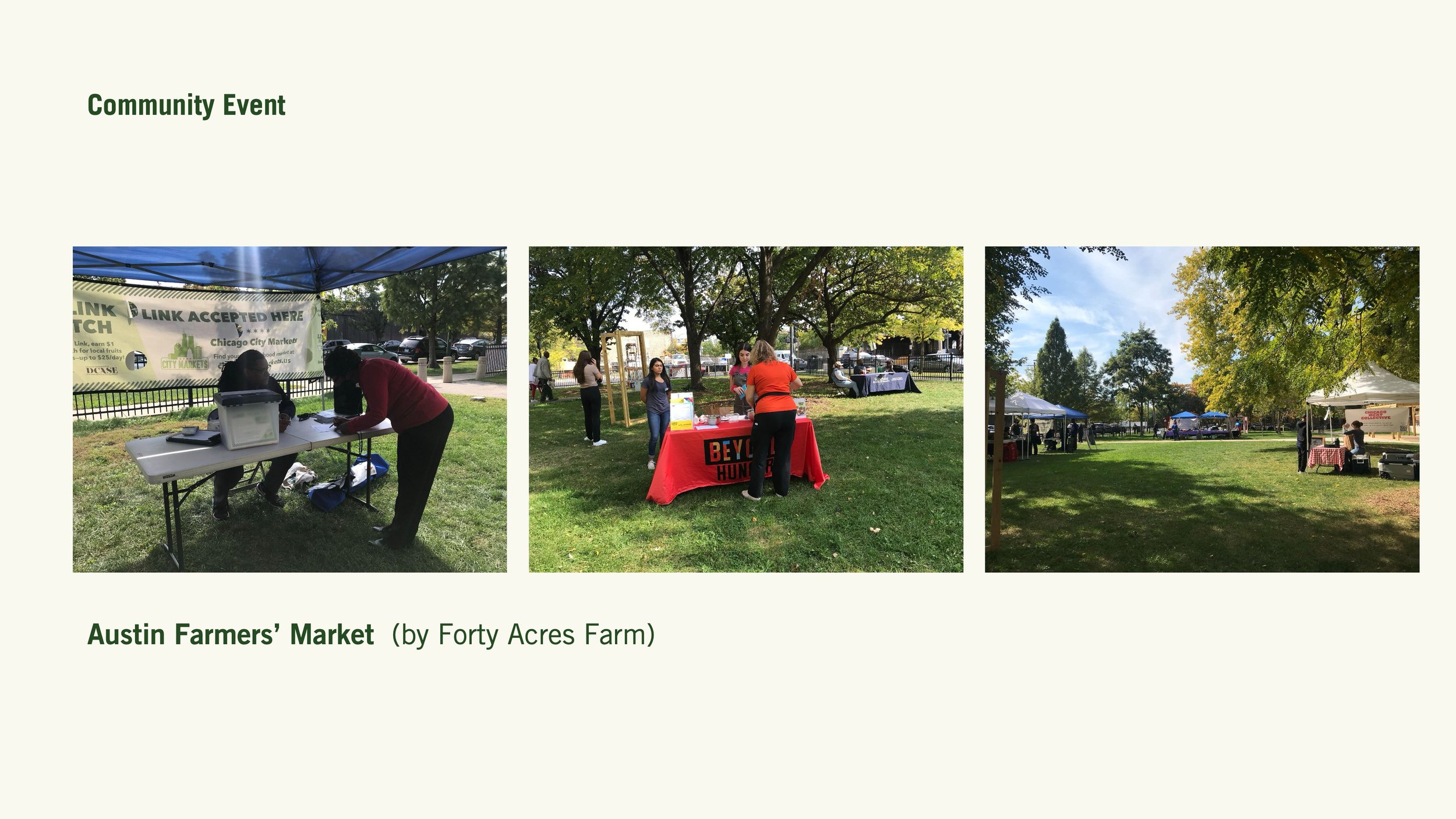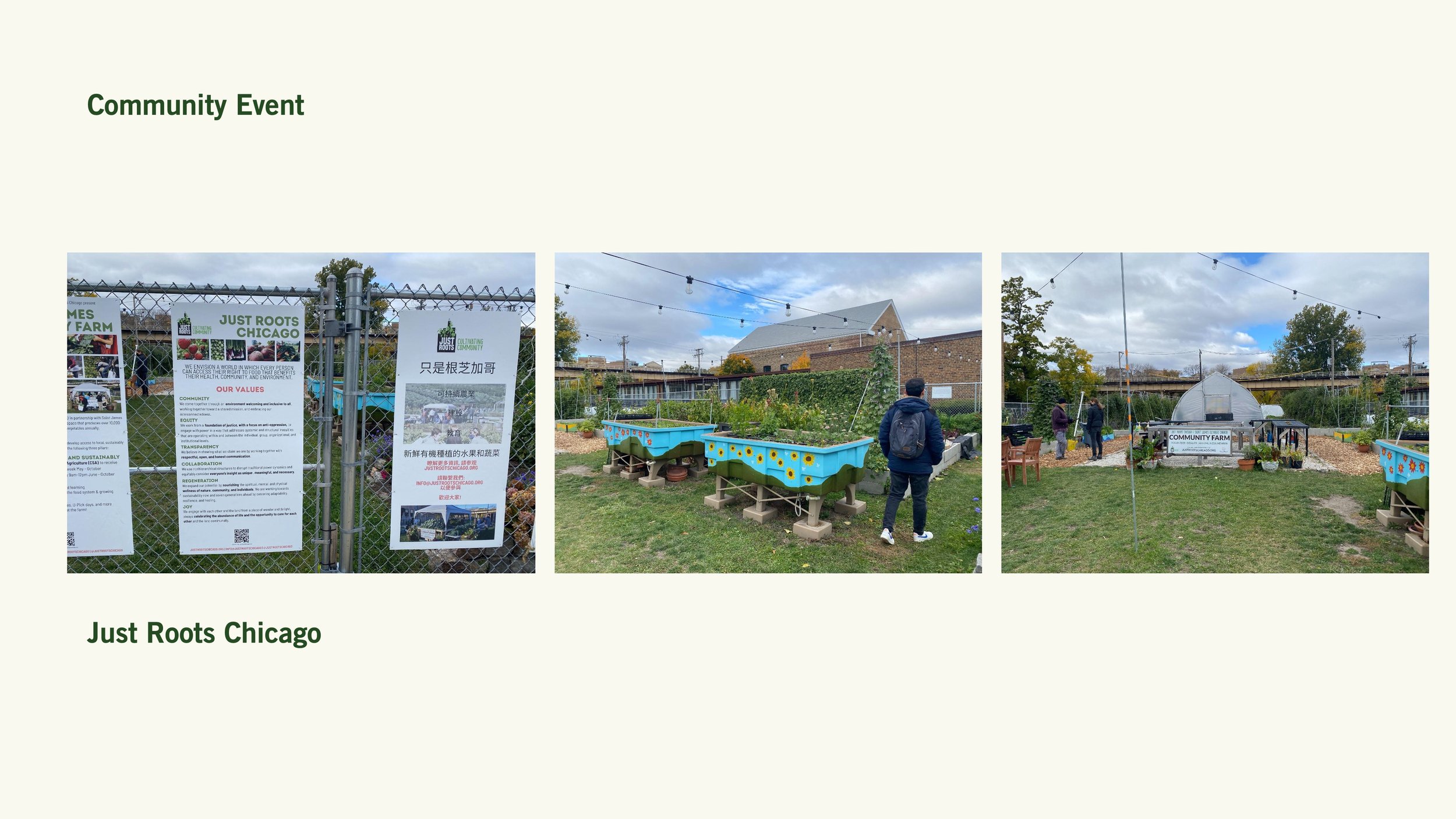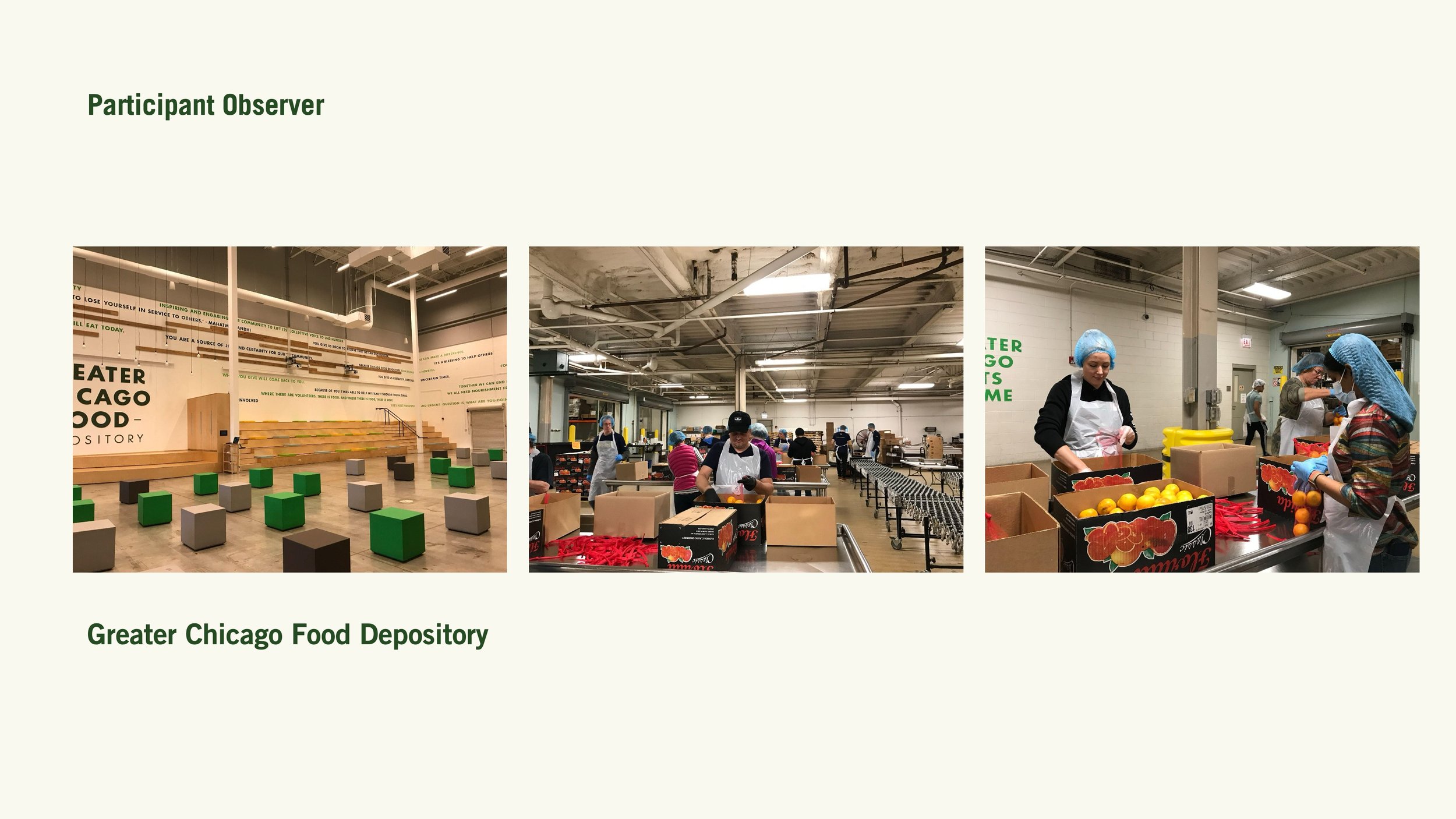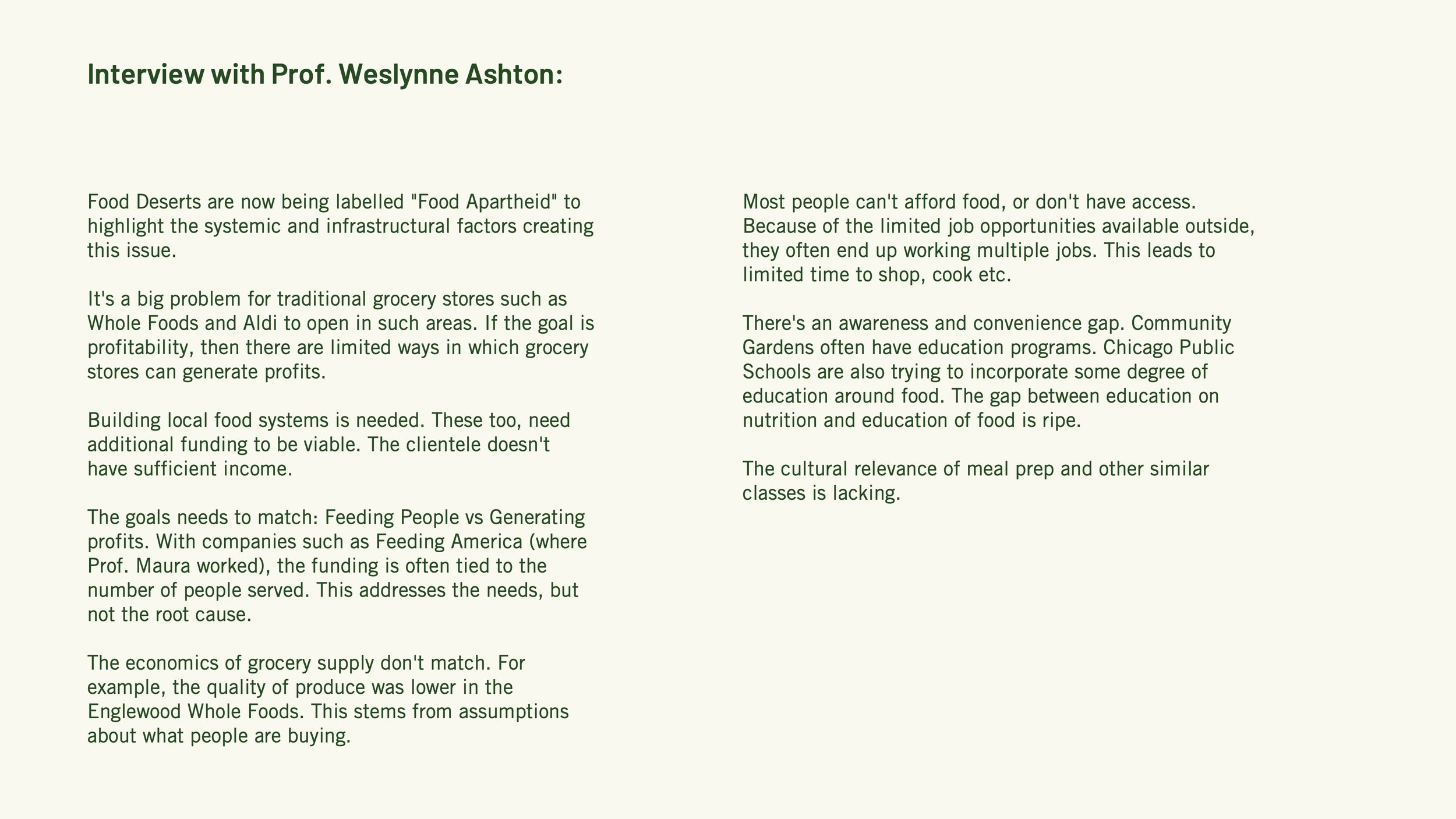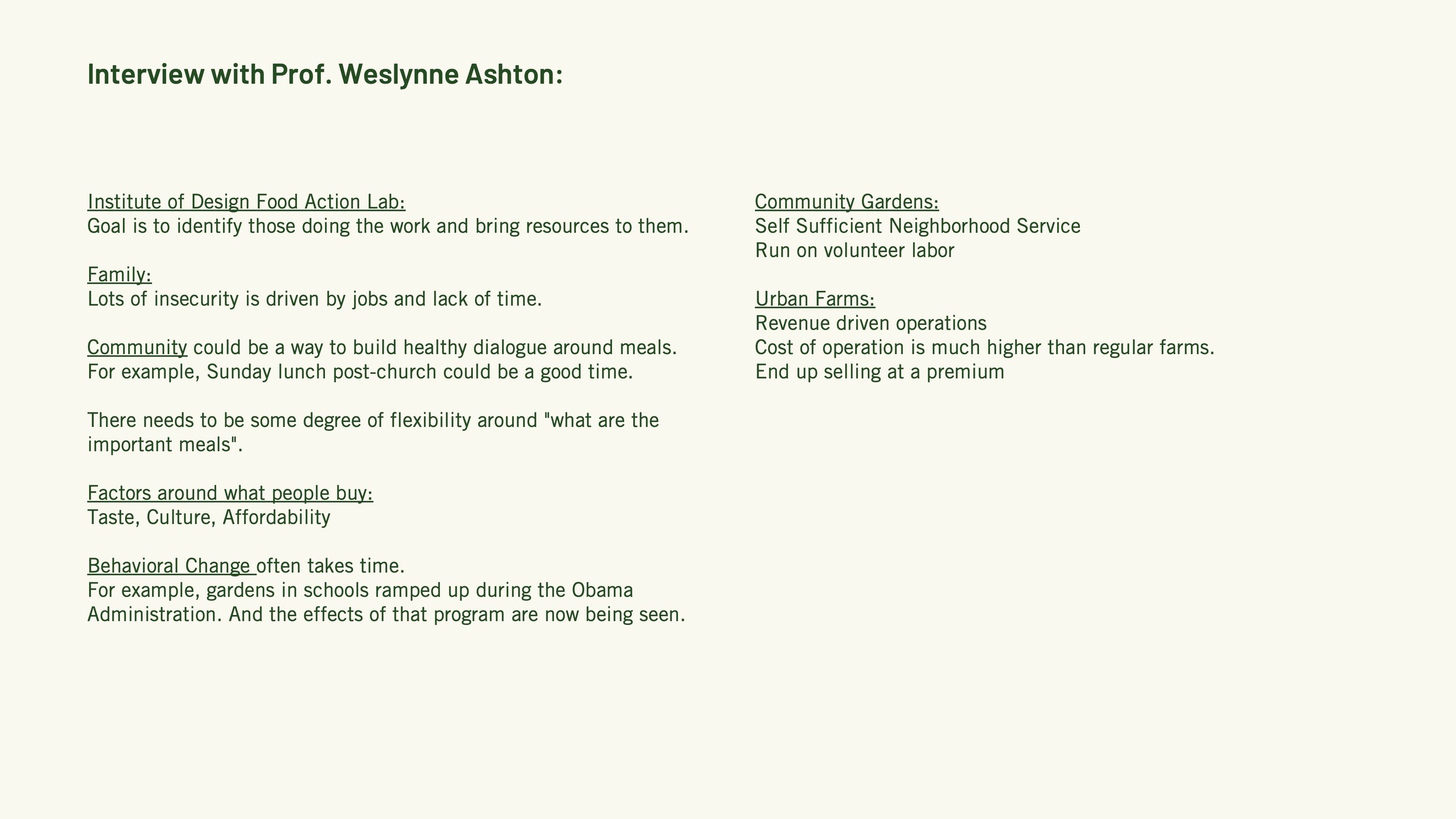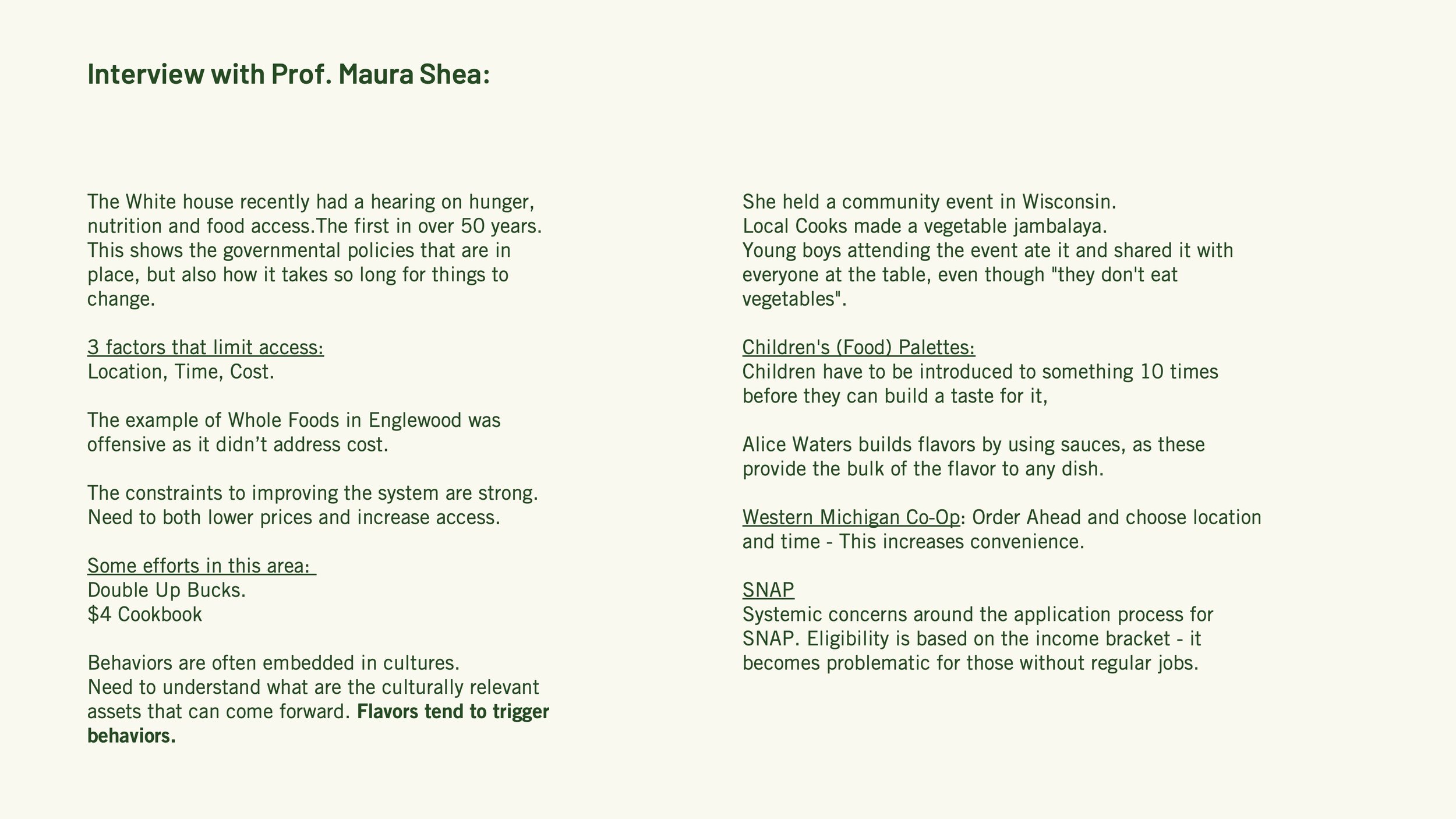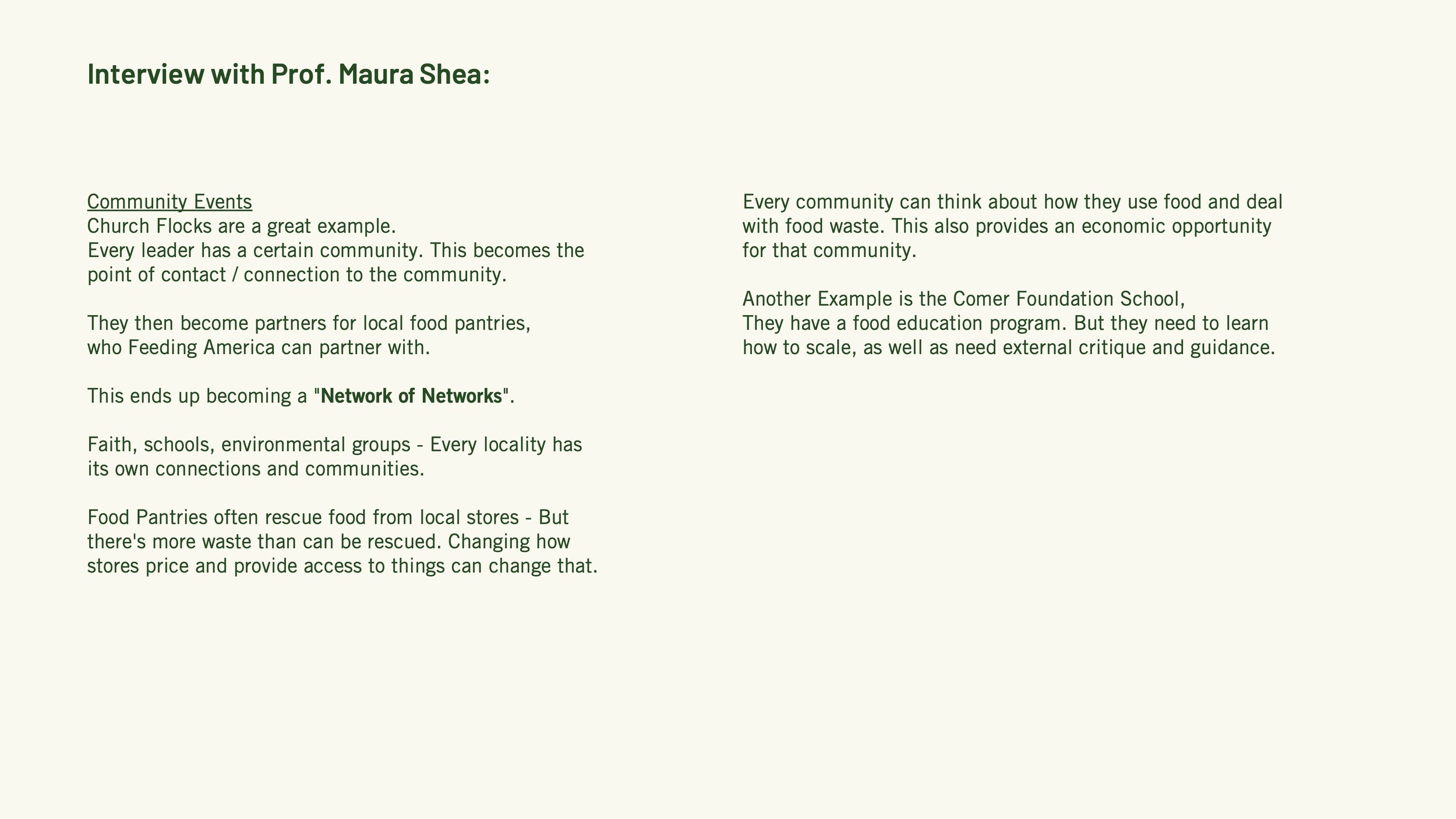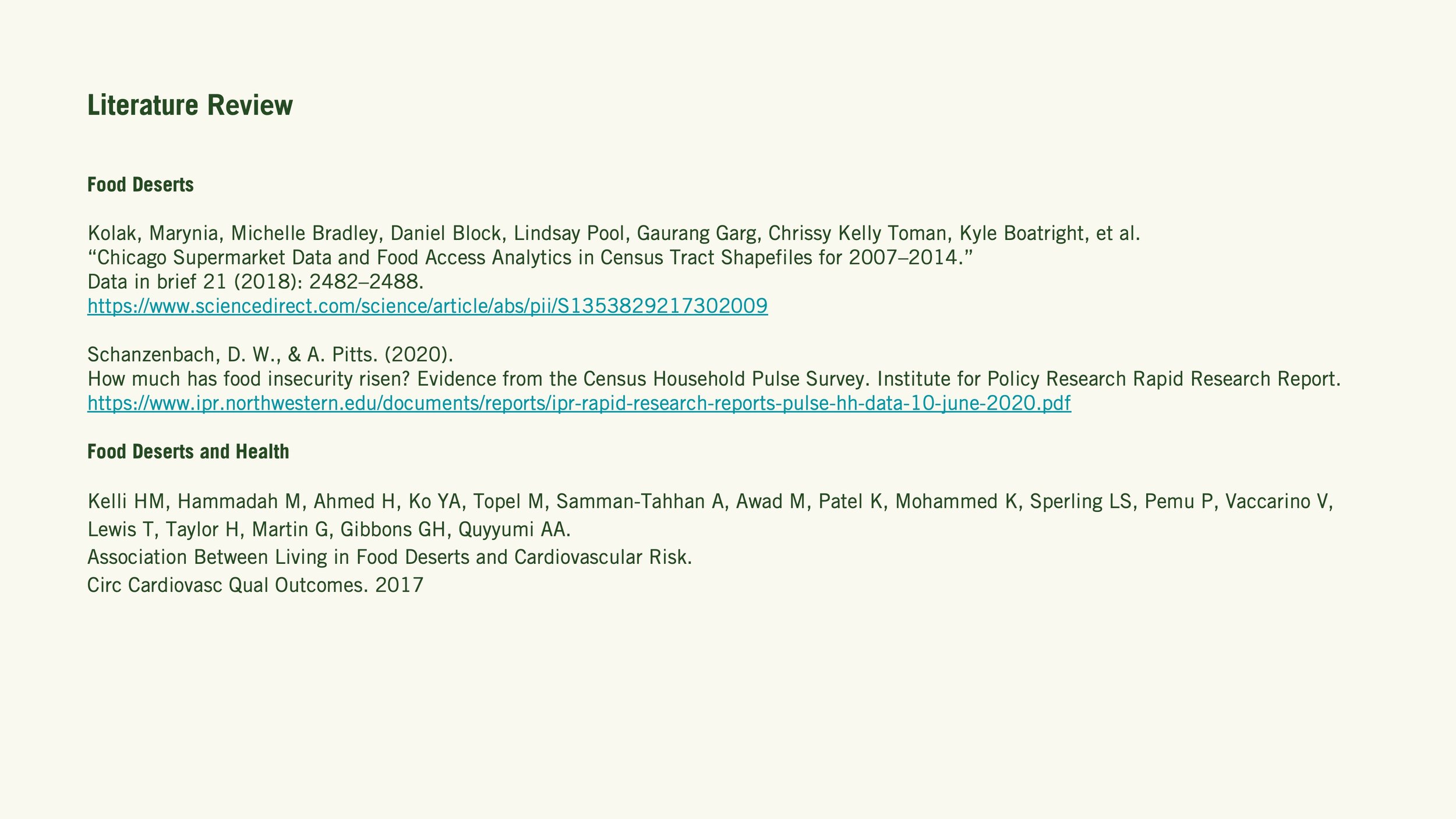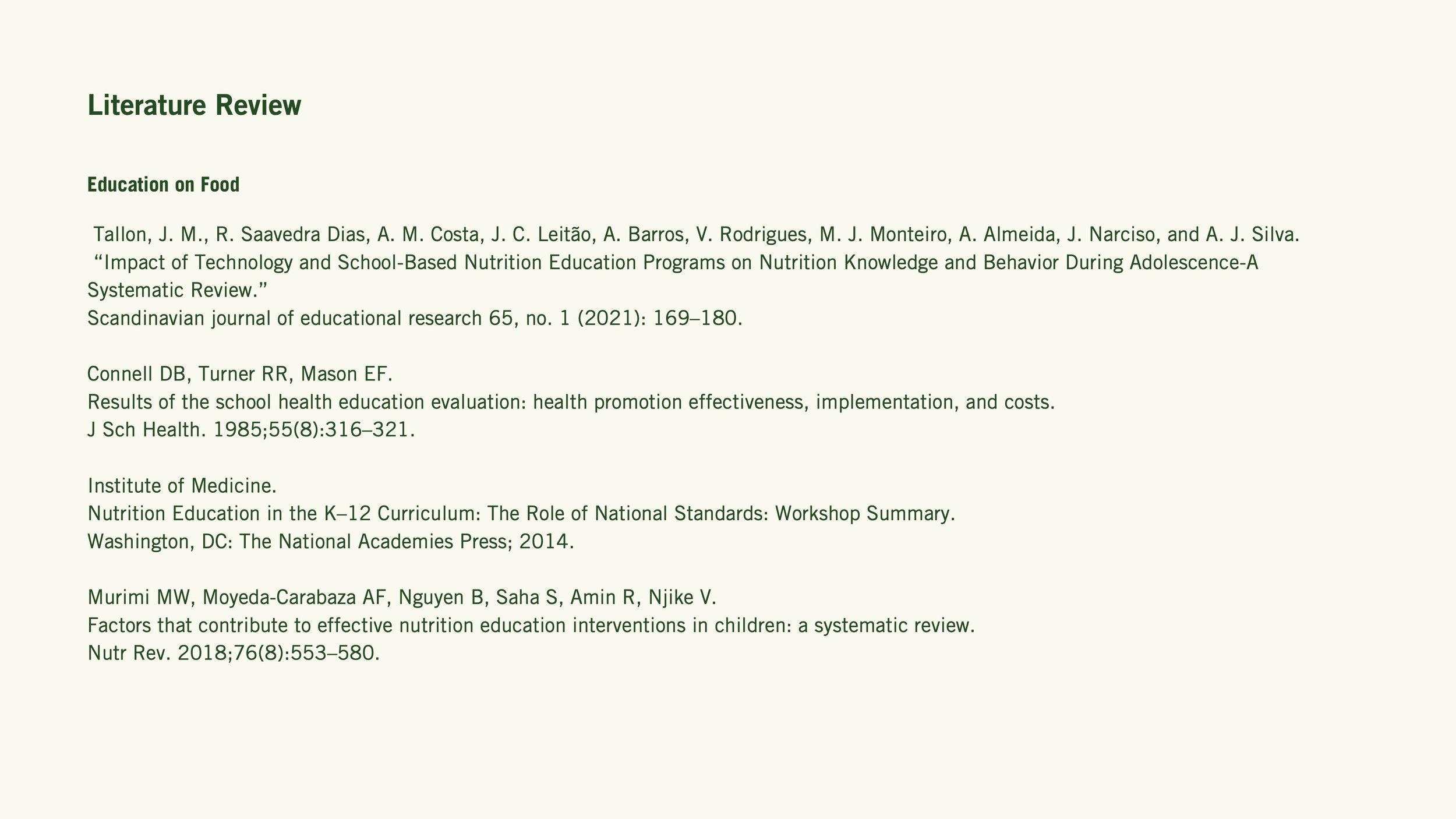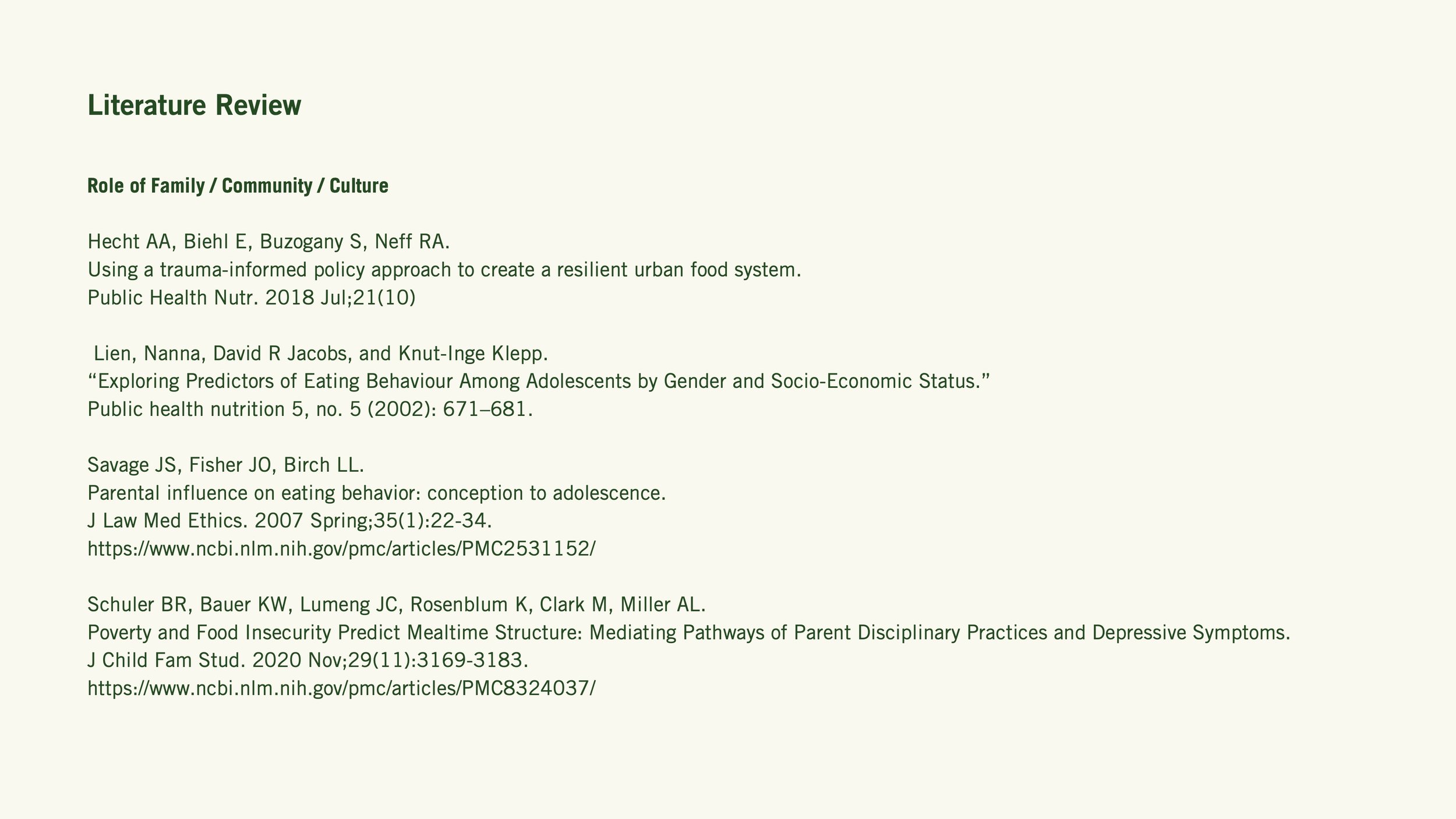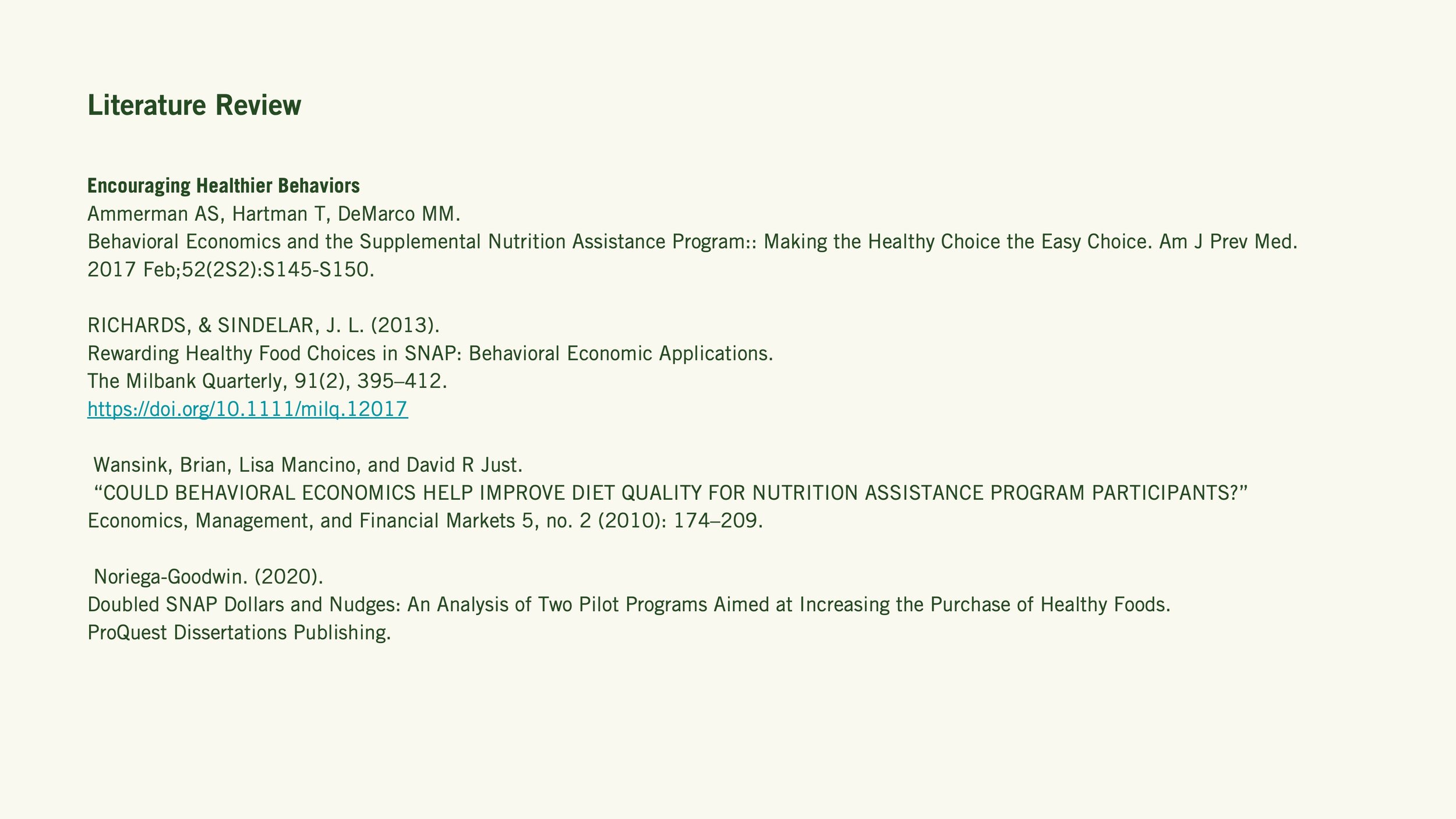Food Insecurity in Chicago
Community Engagement as a Method to Improve Education around food
2023
Behavioral Design
Introduction
Imagine having to take a train or a bus to get a snack.
Imagine having to skip lunch to save money for gas.
Imagine having to choose between who in your family gets to eat dinner.
These are decisions that up to 1 in 4 Americans have to make. Everyday.
As part of a class on Behavioral Design taught by Prof. Ruth Schmidt at the Institute of Design, Brayan Pabon, Sophie Chen, Smrti Ganesan and I looked at using systems design to understand the driving forces behind food insecurity, and ways in which behavioral design can inform and improve interventions.
Why
Community Events and Education?
Education is more than just the things taught at school.
Rituals form an important part of how we learn about food, and build habits and identity.
(either good or bad).
Studying different areas where people are more receptive to education around food, we chose to focus on Community Events as an entry point for behavioral change.
We started with a mix of primary and secondary research to better understand the problem:
Lindsey (Forty Acres Farms)
Tommy Elwell (Just Roots Chicago)
John (Greater Chicago Food Depository)
Interviews
Prof. Weslynne Ashton (IIT)
Prof. Maura Shea (IIT)
Expert
Interviews
Austin Farmer’s Market
Just Roots Chicago
Elmwood Park Food Pantry
Community
Events
Reddit
Youtube
TikTok
Instagram
Online Cultural
Deep Dive
Eater Chicago
South Side Weekly
NYU News
CDC
USDA
FDA
Desk
Research
Greater Chicago
Food Depository: Repack
Participant
Observation
System Mapping
While there are multiple efforts to reduce food insecurity, they are often conducted by different stakeholders, and focus on only one part of the system.
In order to ensure an effective solution, we need to understand the system, and needs of different of different stakeholders, and how any intervention will affect or benefit them.
Stakeholder
Guidance they need
How to (better) host a community event in order to facilitate behavioral change
Who they can reach out to and engage with for support in hosting an event.
Community Leaders /
Event Organizers
Local Farmers
What events and stores they can sell their produce at.
How they can effectively engage with the community through events.
How they can support behavioral change through the goods they stock.
How they can support and promote local farmers/local produce.
Who to get in touch with to donate food waste.
Supermarkets /
Grocery Stores
How they can brand themselves to lower the stigma for customers.
How they can better educate customers on the governmental benefits and local resources available to them.
How can they connect with local grocery stores, farmers and community gardens to improve the food they offer?
Foodbanks /
Food Pantries
What existing networks can they tap into for outreach?
How they can help contribute to long term behavioral change
What they need to be aware of when it comes to local cultural norms/assets.
Non-Profits
What they need to be aware of when it comes to local cultural norms/assets.
What existing networks can they tap into for outreach?
How they can help contribute to long term behavioral change
Government Entities
How they can help long term behavioral change through education (teaching skills vs teaching recipes)
How they can engage with communities, what communities they can engage with, who they can reach out to.
What NGO's, Food Banks and Food Pantries they can engage with.
Chefs /
Authors /
Food Bloggers
Aligned Interventions
As the system is incredibly complex, any attempt at significant, persistent change would require multiple interventions at multiple points in the customer journey. These would need to be aligned to ensure that the change is persistent rather than temporary change.
In order to facilitate this alignment, we created a framework for behavioral change through community engagement.
Entice
Framing is important as it reflects identity and context, and affects receptivity.
The first hurdle is attracting people to community events. With busy schedules, a community event can seem like a significant time investment.
While it may seem apt to frame these as cooking classes or farmer’s market, these may not attract the right target audience. But, framing it as a completely unrelated event will affect receptivity. Finding a balance is key.
Piggy-backing off an existing event will be helpful. Communities often have existing networks that are an effective way to spread the message and advertise an event to members of a community, and tapping into these “networks of networks” is key to bringing in people.
Possible Intervention: A guide for how to host a community event to incorporate behavioral design elements and drive social change.
Engage
Interventions need to build on the existing cultural assets of the community
Engagement is key to achieving buy-in. And taste is key to engagement.
Any engagement needs to be tailored to the culture of the local community, and build on those assets instead of trying to introduce new flavors and foods. Tapping into the knowledge of local chefs and community leaders is important, as they can provide deeper insights than can be gleaned from research.
Possible Intervention: Re-interpreting traditional dishes to incorporate more vegetables / locally sourced/ sustainable ingredients.
Educate
The barriers for entry are high and need to be lowered
Going from someone that doesn’t cook, to someone that can meal plan, shop, prep and cook every meal for a week is a big ask, and can instantly push people away.
Introducing structure, reducing friction and focusing on success stories can help. By starting people off with simple tasks and simple recipes, the barrier for entry is lowered. Slowly increasing the difficulty flattens the learning curve as it focuses on developing one skill at a time, instead of dealing with multiple challenges all at once.
Possible Intervention: Provide a “take-home meal box” with the right amount of ingredients and instructions to make one-meal.
Encourage
Building consistency and persistence is key
Entry points aren’t enough for persistent change. Prolonged growth needs to be built through consistency, patience and persistence, which in turn requires encouragement.
Encouragement can come in the form of sharing progress, or by having a guide or helpline for instructions or help. Showcasing previous success stories helps motivate people through difficult stages. Emphasizing the long term goals also helps, both from a personal standpoint (becoming self-sufficient, healthy), but also in terms of community (being able to cook healthy meals for the family, being able to host my own event)
Possible Intervention: Encourage sharing of stories regarding outcomes with groups or at future events
Expand
Community events provide an entry point for further community engagement
Engaging further with the community can help both for individuals, and for event organizers. Linking the two is important in order to scale.
Connecting with local farms to supply the ingredients for an event can help both parties. Informing people about the benefits of locally sourced food can have longer term impacts for the entire system; by increasing demand for locally sourced food will also help community farms, gardens and stores grow, and in turn, bringing down costs. This system will also help people achieve ownership of their personal food rituals and nutrition, as they see the impacts their choices have on the people around them.
Possible Intervention: A platform for members of the community to share resources, events and recipes in order to create a local network
These strategies are designed to “boost” rather than nudge.
But they will also need to work with changes in other areas of the system, including schools and stores, as well as larger changes at a policy level in order to make a positive, persistent change to the system.


